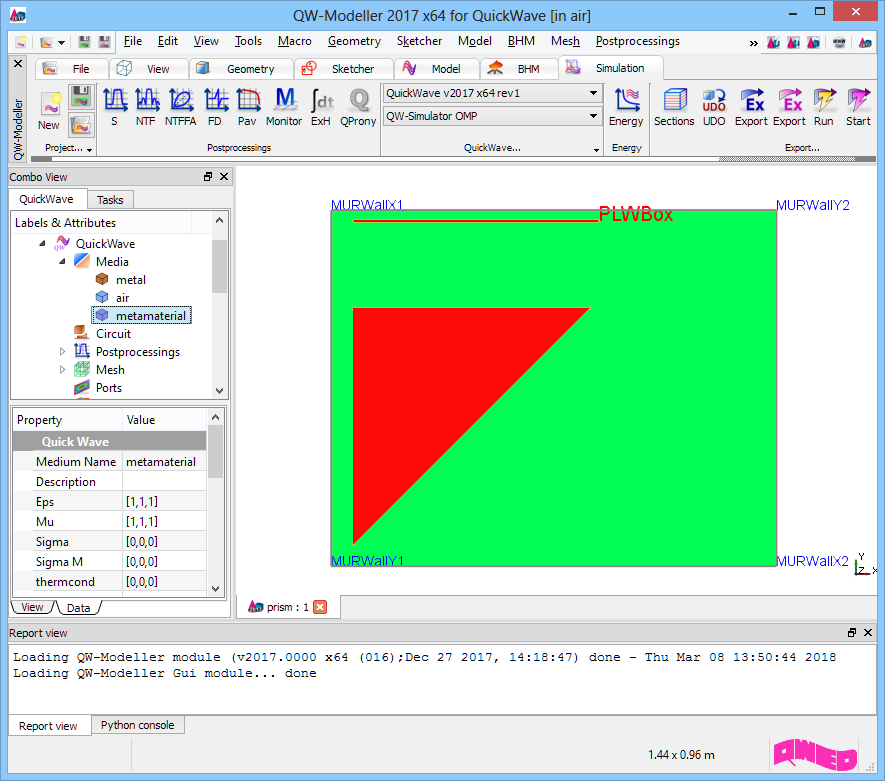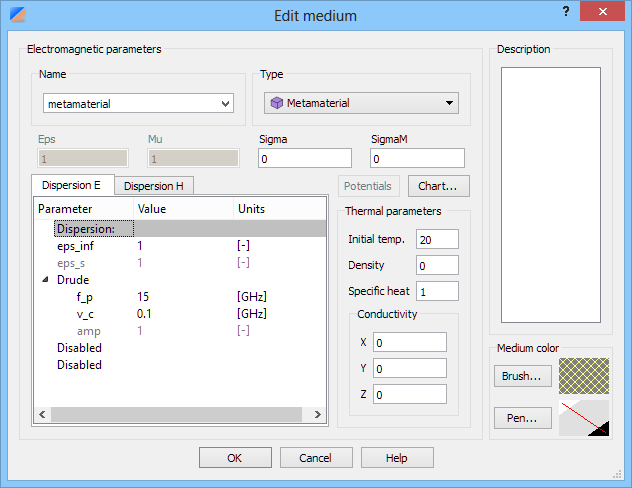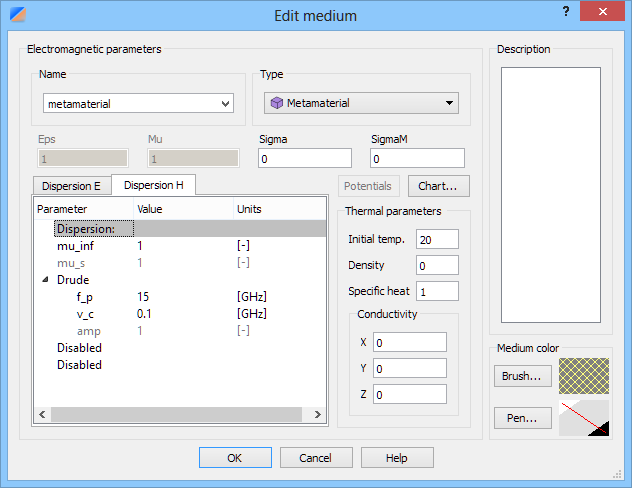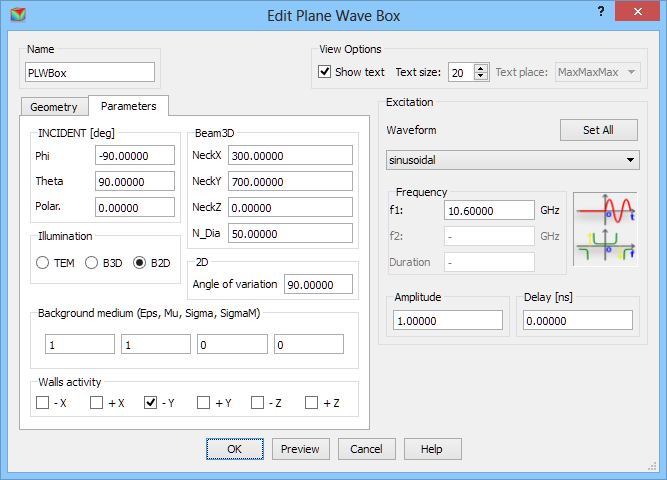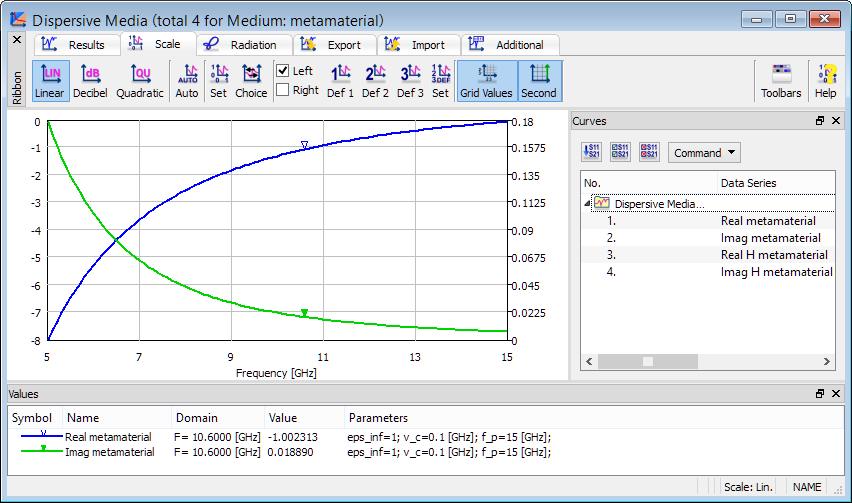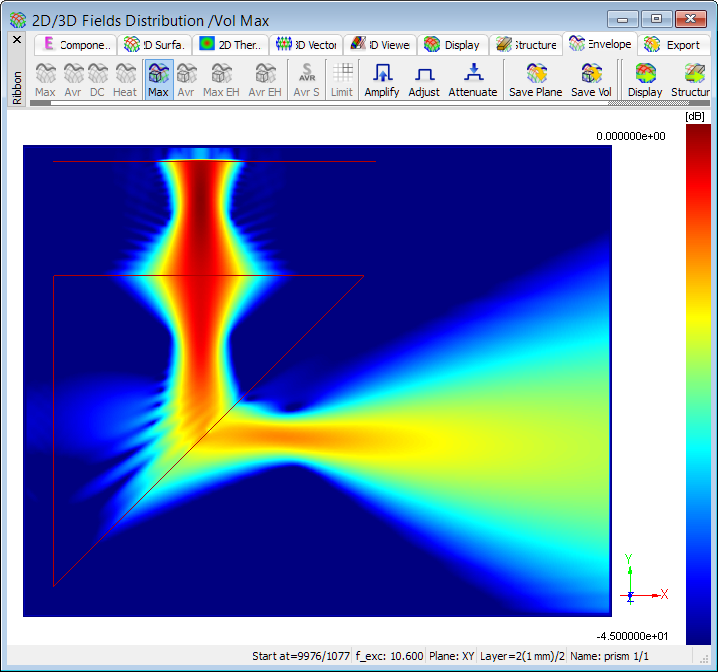Metamaterial prism illuminated with Gaussian beam
The present example considers a metamaterial prism illuminated with Gaussian beam. It discusses an application of a Gaussian bean to the analysis of left handed materials (LHM), also called metamaterials.
Metamaterial prism project in QW-Modeller.
The triangular prism is located in the open-air region. The prism width and height are 530 mm and it is made of metamaterial with Drude dispersive model applied for both, electric and magnetic material properties.
Drude model parameters describing relative permittivity.
Drude model parameters describing relative permeability.
For the purpose of exciting free space incident wave we introduce an auxiliary surface called PLW Box (Plane Wave Box). A single PLW Box wall has been placed above the prism to illuminate it with the 2D Gaussian beam with the following parameters:
Gaussian beam parameters.
The settings on Incident degrees imply that the beam propagates in the XY-plane (Theta=90) along the –Y direction (Phi=-90) and its electric field is Z-polarised (Polarisation=0). Under Beam 2D we see that the angle of variation for the beam is 90 degrees. This means that the beam has no phase shift along the Z-axis. We may therefore reduce the model to the 2D one (one layer in Z- direction with electric boundary conditions at the bottom and top).
We may notice that the neck of the Gaussian beam is set at NeckY=700 mm, which is about 120 mm above the prism, whereas the illumination is exactly perpendicular to the upper face of the prism. When the prism is made of a classical right handed material (RHM), the beam is 45 degrees bent from the wedged face of the prism.
The dispersive model of the prism material was adjusted to obtain the real part of the relative permittivity (permeability) close to εr' = -1 (µr' = -1) at the excitation frequency f=10.6 GHz.
Complex permittivity (permeability) of the metamaterial.
For classical right handed materials, with positive εr', the beam would refract towards the left side of the scenario. Since εr'= -1 and illumination angle is 45 degrees, the beam refracts exactly at the right angle.
We observe another interesting phenomenon. The original neck of the illumination beam is above the prism. We may notice that the neck is reconstructed in the refracted beam, at the same distance from the prism edge. This phenomenon cannot be achieved with right handed materials and justifies current interest in the left handed ones.
Time-maximum envelope of the Poynting vector for the metamaterial prism illuminated with Gaussian beam (decibel scale).




